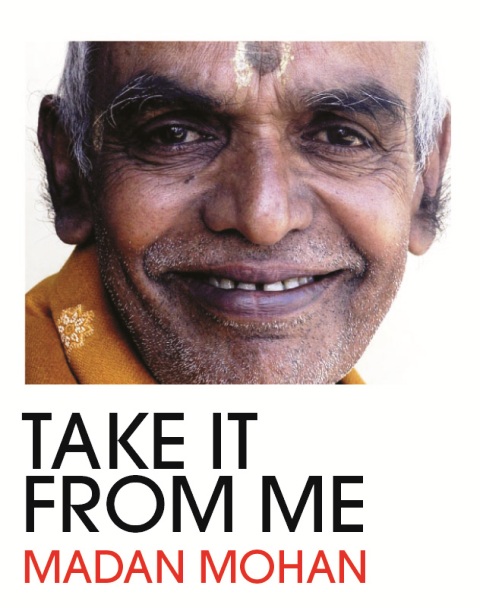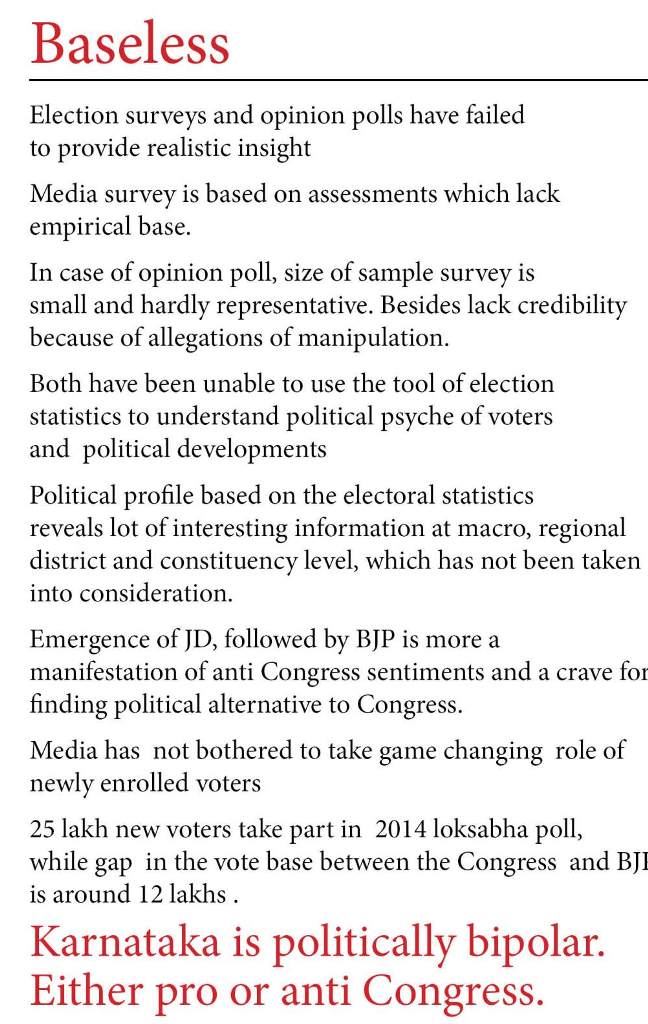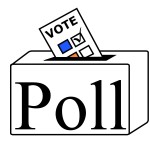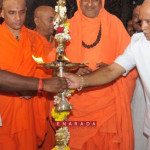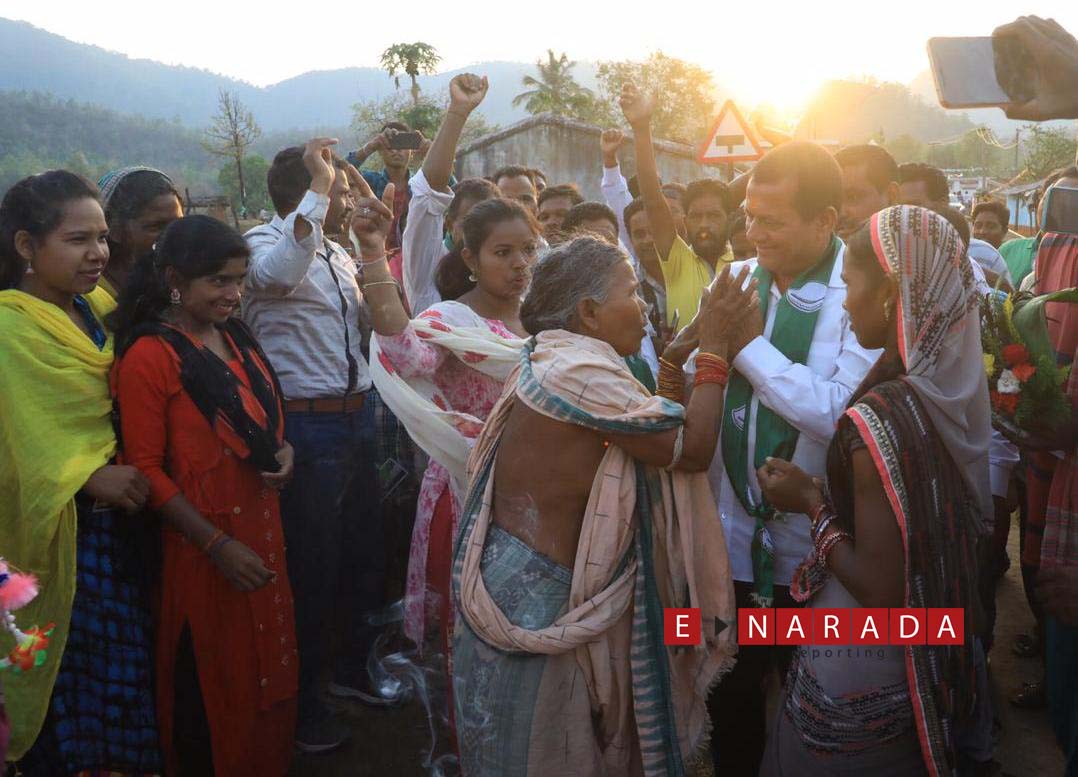ENARADA, Hubli
By MATHIHALLI MADAN MOHAN
Now that the election season is fully on, there is a virtual deluge of election surveys and opinion polls made by the media, both print and electronic, all in a bid to unravel the mind of the voters as for as the prospects of the contesting parties in the election.
But the past experience has it that the media assessment and the psephological studies by the academics is often wide off the mark in throwing insight into the psyche of the voters.
This occurs because of the two main factors. Firstly the data relied upon is more subjective than empirical in the case of the print media. The opinion polls undertaken by the channels suffer from the sample size being too small and fully representatives in nature and thereby increasing the higher risk of margin of errors. Besides of late the opinion polls are hit by the credibility factors, with allegations flying around that they are often manipulated to serve the interests of those who sponsor them and the absence of the transparency manipulated to suit the political interests of those who have sponsored the studies.
While the vote is a sum total of expression of peoples opinion on a wide gamut of subjects, the media has been basing its assessment couple of factors, like the permutation and combination of caste factors, the mounting grievances of the people , gropes in the dark on how these factors converted or not converted into votes. The media’s attempts appear something akin to blind men’s attempt to size up the elephant with the help of the part of pachyderm which comes into their contact.
What is however interesting is that despite fully being made aware of the pitfalls of the election surveys, the media has hardly made an attempt to move away from the beaten track, in exploring avenues in a bid to give a nearer realistic picture of the ground realities.
For reasons not very clear, the media analysts have refused to use the election statistics as a tool for understanding the mood and mindset of the voters, where every one of inferences drawn are backed by the cold statistics which are official, unlike the other data and assumptions they are depending upon.
The election statistics, helps us in drawing a political profile from macro level of the state’s scenario, which can move down up to the district and the constituencies, depending upon the area of focus of study, revealing interesting data about the how deeply or otherwise the voters are committed in exercising their right of franchise, and the political leanings which emerge out of the plethora of reasons, which make them cast votes. This necessarily gives us an interesting insight in assessing the tussle for political one-upmanship indulged in by the parties, at different level.
For example at the macro level in Karnataka, the election statistics has settled down as a politically bipolar state, with the third political party, being too distantly placed to challenge the hegemony of Congress and BJP. There is a regional variation. The Congress has to take on BJP in Northern Region and battle with JDS partly and with BJP in the southern half.
There is a gradual rise in the anti-Congress votes. And the efforts to consolidate them has resulted in the birth of the anti-Congress outfits like the Janata Dal and the BJP in Karnataka politics, which has practically remained bipolar in nature. The political ascendancy of the BJP is more seen as a crave on the part of the anti-Congress forces in finding a credible political alternative to Congress than as an expression of the endorsement of the saffron ideology, following political vacuum created by the failure of the Janata Dal experiment in creating a political alternative to Congress.
One significant inference which emerges as a consequence is that voting is more a habit forming phenomenon than as an expression of the reaction to the political developments of the relevant time. Once a voter gets hooked to a political party for whatever reason, he/she invariably sticks to it throughout.
This is evident in the manner in which the vote base of the Congress remained unaltered despite the party’s failure to win the assembly elections in 1994, 2004 and 2008. The Congress did not gain any additional votes despite the increase in electorate and poll turn out but there was no erosion either.
Always the Congress has remained as a party, with a largest vote base notwithstanding its success or failures at the hustings. In 2008 elections also, it turned out to be the same position. The BJP had been able to come nearer but could not overtake the Congress as for as the vote base is concerned. It was only during the series of assembly by-elections that were induced by the BJP, during the period, that the BJP pipped the Congress slightly move to the No. 1 position. But the Congress regained the lost position in the 2013 assembly election held last year.
One can also discern a subtle difference in the voters’ reactions when assembly and parliament polls are held simultaneously or separately. In the case of simultaneous polls, the voting pattern is almost uniform, whatever preferences made for the assembly election gets reflected for the parliament too. When the parliament poll is held separately, it so happens the turn out tends to be lower mainly because of the low intensity in campaigning and involvement. But the national parties tend to get more votes. This arises mainly because, some of the voters who would have avoided the national parties, at the assembly tend to look at them in the parliament poll.
But for the JDS, which is a sub-regional party, with a national name, the position is reverse. It suffers from a serious erosion of its base in the parliament poll and this is the main impediment which comes in the way of Devegowda’s grand design of playing an active role in national politics because of the limitations imposed on his party’s performance in loksabha elections.
Again, for reasons, which are not clear, the media and pollsters have practically refused to consider the significant role of the newly enrolled voters in the election. This is the category, which is sure to exercise the maiden opportunity to cast votes being apolitical in nature and not committed to any political ideology, these category of voters are the virtual game changers. While their peers may vote according to the habit in most of the cases, the new comers will be making the political choice for the first time.
It is this category of voters, which is provided the political sinews to the newly formed AAP, which after its phenomenal electoral success, has entered the frey for the parliamentary election too. Both Mamata Bannerjee in West Bengal and Jayalalitha in Tamilnadu rode to success over the crest of the support provided by the new voters.
Back home in Karnataka, this has been the single biggest factor which propelled the BJP to power in a span of three assembly elections of 1999, 2004 and 2008. In all these elections, the newly enrolled voters backed the BJP enmasse as it were, helping to close the big gap in the base between the BJP and Congress. During this period, the Congress literally did not get a single vote extra and similar was the plight of the JDS. The pro BJP stint stands loud and clear. In the 2009 parliament elections also, the BJP, was able to send the largest contingent of 19 members to Loksabha, for the first time, as a consequence.
The only difference in the experience of the AAP and others has been that AAP planned for it, by launching a systematic and vigorous campaign for enrolment and made them aware of their political stakes in the election. But for others the support had come on its own, without any special efforts on the part of the political parties in wooing them. In Karnataka, perhaps the BJP represented the spirit of adventure, which appealed to the young minds.
In 2013 assembly elections, the trend was bucked to some extent in Karnataka, with sizeable section of the new voters veering towards Congress. This was perhaps an expression of disillusionment because of the internal bickering within the BJP. But some of them went steady with the BJP was evident from the fact, the combined votes polled by the BJP, Yeddyurappa’s KJP and the Sriramulu’s BSR Congress, had received an additional 15 lakhs votes over what the united party had got in 2008 elections.
For the 2014 loksabha elections, the number of newly enrolled voters, stands at more than 25 lakhs, with as many as 15.27 lakh new voters, having been enrolled in the past three months. Obviously this is the product of the vigorous campaign undertaken by some of the social activists groups. This perhaps has been highest enrollment done so far within a span of one year.
The key role that this category voters, will play in deciding the political fortunes of the parties in frey, can be understood by the fact that that the gap between the vote base secured by the Congress (114.10 lakhs) and the now united BJP (101.38 lakhs) is just around little more than 12 lakhs ( See ENarada – Act of Political Compulsion? – 12th Jan. 2014)
The question crucial to political fortunes of the Congress and BJP in the 2014 elections, hinges on whether the new voters would go solidly behind BJP, as per the track record of three assembly elections of 1999, 2004, 2008 and the loksabha poll of 2009, or would follow the 2013 election, apportioning its patronage both? It is certain that they would not look at the JDS.
The BJP is led by the prime ministerial candidate, who has an iconic personality appealing to the voters. But the face of Rahul Gandhi, the vice President and in charge of the election campaign, has not acquired that kind of iconic stature.
Which way the new voters would go this time, has been the question, which is engaging the mind of the poll watchers outside the media and pollsters fraternity. Besides the BJP and Congress there is a third claimant for their attention too. It is the newly party AAP, which has entered the frey in Karnataka. The problem for the AAP being formed newly has to depend entirely on the image of Mr. Kejriwal, in the absence of any credible local face of its own.
(Posted on April 3 , 2014 @ 10 am)
(Author is a Senior Journalist and Columnist. He can be contacted on Mobile: +91 94480 74872 / Email:madan.mm@gmail.com)
The views expressed on the website are those of the Columnists/ Authors/Journalists / Correspondents and do not necessarily reflect the views of ENARADA.


